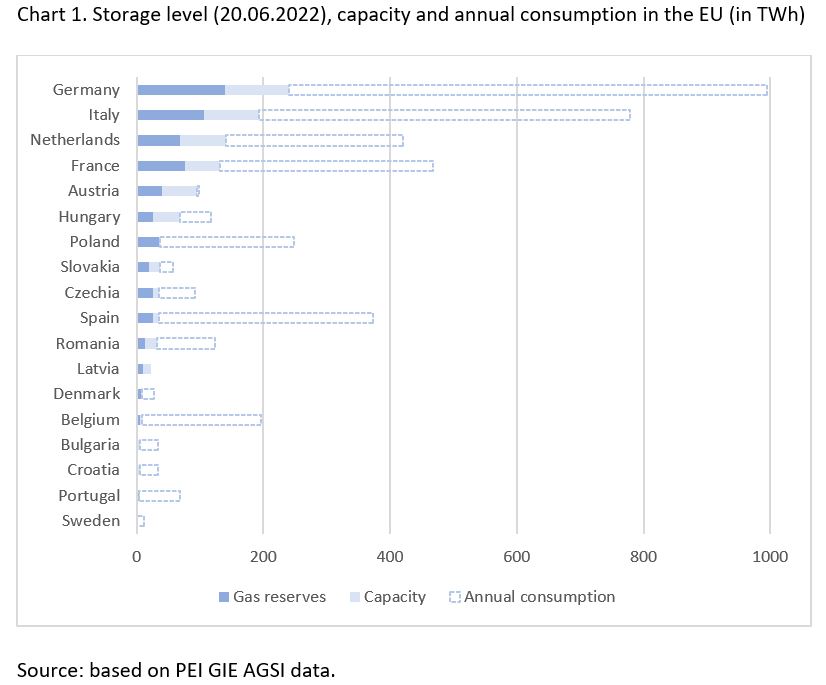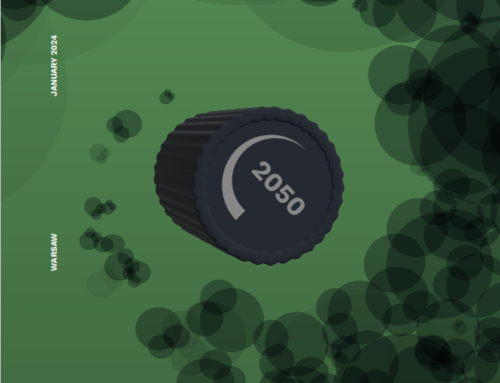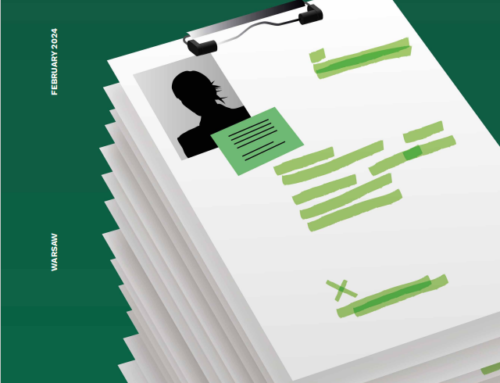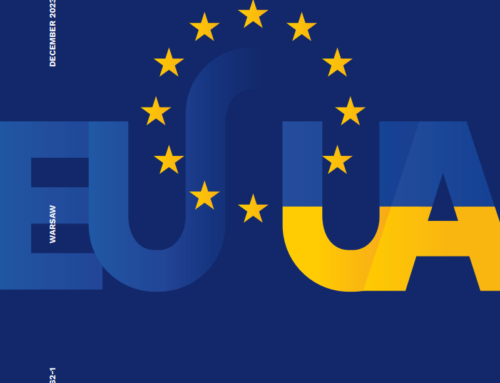How EU countries are prepared for the lack of Russian gas
Opublikowano: 28/06/2022
While the European Union strives to reach a consensus on banning gas from Russia, Putin is restricting supplies to a growing list of countries. Gas storage facilities in EU countries are currently 53% full, on average, and reaching the level of 80% expected in November will be difficult. Current storage level is 15% of annual consumption.
Russian Gazprom is cutting off more countries from gas supplies. After suspending gas supplies to Poland, Bulgaria and France, it reduced deliveries to Italy by 15%, to Slovakia by 50%, and to Germany by 60%. Gas deliveries to the Netherlands, Denmark, Finland, the Baltic States and Austria have been limited, too.
“Russia has shown again that, contrary to the West’s opinion, Putin is not a business partner. He is an aggressor who does not respect agreements and contracts. The scenario analysts had warned of at the start of the war has materialised: without waiting for the West to reach an agreement on banning Russian commodities, Putin has started cutting off access himself. Today, cooperation between EU countries to ensure energy security and obtain gas from other sources is extremely important. Western Europe must be ready for every possible scenario, including no gas from Russia at all,” said Piotr Arak, director of the Polish Economic Institute.
The EU continues to import gas via pipelines from Norway, Azerbaijan and other regions. The volume delivered by LNG tankers is increasing, too. Gas storage facilities in the EU are currently 53% full, on average. A level of 80% should be reached in November, but it is already clear that this will be difficult. Full gas storage facilities in the EU would cover two months of winter demand and twice as much in the summer, without any supply or production. The complete suspension of deliveries by Nord Stream would be 20 pp. lower the level needed to reach 80% in November.
73% of gas storage capacity on the EU territory is in 5 countries: Germany, Italy, Netherlands, France and Austria. Total EU capacity is 1100 TWh, which is 26.5% of the consumption. In 18 countries there is 160 gas storage facilities. Only Latvia has higher storage capacity than consumption. Storage fill differ among countries varying from 99% in Portugal to 24% in Sweden. Although Portugal has almost full storage capacity filled, its storage capacity is very low compared to consumption (5%). The filling level compared to annual consumption is the highest in Latvia (77%), Austria (41%) and Slovakia 34%, and the lowest in Belgium (2,3%), Croatia (4%) and Sweden (0,2%).
“Bulgaria and Poland are the only two EU countries whose contracts with Gazprom were going to expire at the end of this year. The medium-term risk if Russia cuts off gas supplies completely is relatively low in the following countries: Sweden, Denmark, Spain, Italy and Greece. France covered around one-fifth of its gas consumption using Russian gas supplied via a pipeline from Germany and an LNG terminal. Although it has not been receiving Russian gas via this pipeline since 15 June, it has increased LNG imports from Russia since the start of the war. At least some of Slovakia’s demand can be covered via the new gas pipeline from Poland, which has a capacity of almost 13 million m3 per day”, said Magdalena Maj, head of the climate and energy team.
According to the preliminary agreement in the EU, member states without gas storage facilities will be able to cover 15% of their annual consumption from other countries’ stocks. Alternative sources are also being sought, including from Israel via Egypt, from Algeria and Azerbaijan, or from Norway via Baltic Pipe. LNG is an important element of diversification, with well-developed terminals on the Iberian Peninsula. Infrastructure bottlenecks – connections between member states with insufficient capacity – remain a challenge that needs to be solved.
Kategoria: Analysis / Press releases / Russia's invasion of Ukraine






